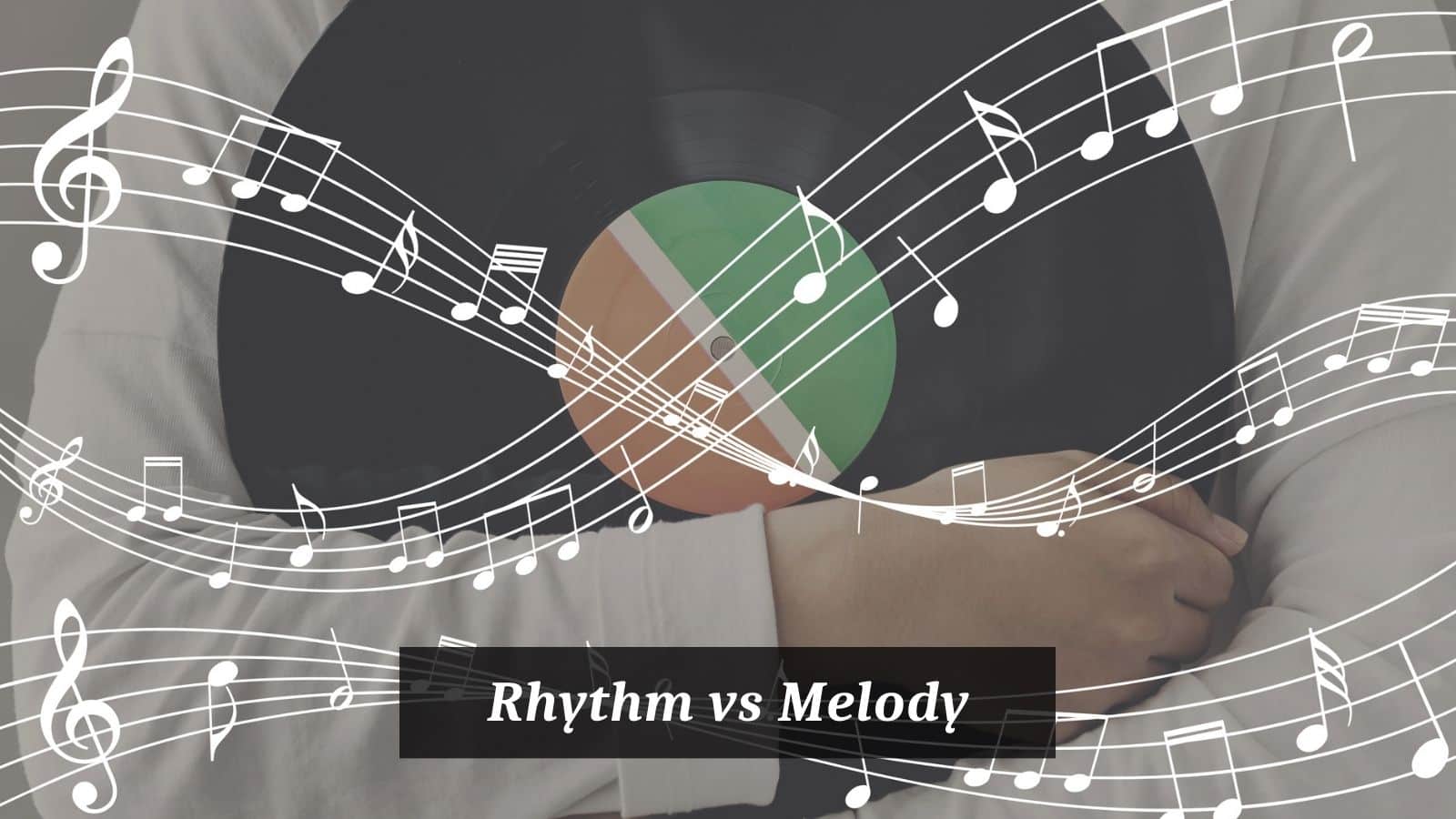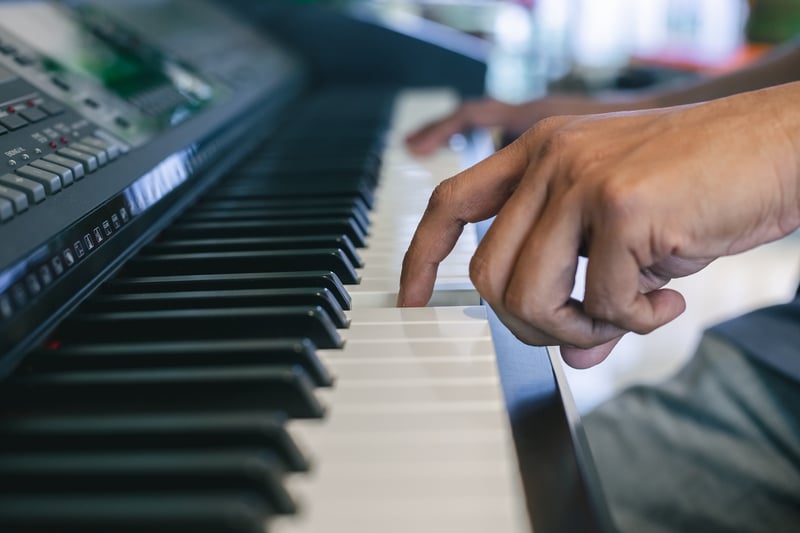
A hard duo to separate. This pair has been locked into a close relationship for centuries, it seems slightly unjust to pit one against the other now and sparking the possibility of a division.
What may be of assistance is a swift journey through the characteristics of these two key musical elements.
Rhythm vs Melody
Rhythm is at the core of most pieces of music. It is often the driving force for a composition that alongside pulse, sets up a piece of music and its particular characteristics.
We could be considering a rhythmic ostinato or short repeating rhythmic idea, or we could simply be thinking of a march-like dotted rhythm. The possibilities are almost endless as the number of rhythmic permutations is thousands if not tens of thousands.
Rhythm is frequently characteristic of a type of music; take a tango for instance. The syncopated, or off-beat rhythm that provides the foundations for a tango is unmistakable.
In Jazz, the swing rhythm used in numerous pieces is a typical and vital rhythmic feature of the genre. Both of these types of music would not be in any way the same without these rhythmic traits. It is the rhythm that calls the tune.
What about the opening movement of Beethoven’s 5th Symphony? Beethoven ingeniously uses a rhythm that starts with a quaver rest before the unforgettable three G’s descent to the Eb.
Any other rhythm and you have a totally different piece of music. Choose almost any composition from the Minimalist school of composition and you will hear the essential nature of rhythm at the very core of the music.
In many minimalist compositions, it is the interplay between layered ostinato that generates the primary interest in the music.
And here we encounter the first crack in the pairing of melody and rhythm. Not every rhythm needs a melody but a melody without a rhythm is only a series of pitches without a specified duration.
There are many examples of music that use rhythm as their basis without the link to a melody. This is particularly true in Minimalist music. Take, Music for Pieces of Wood, or Clapping Music; both by Steve Reich.
Neither of these compositions has any need for a melody, relying as they do only on the interplay between rhythmic patterns.
Stockhausen’s Zyklus, (1959), is a further example of a contemporary piece that uses pitch, but whose main focus is directed towards the rhythm. Composed for a solo percussionist and a generous array of percussion, the piece is interestingly scored so that the performer can begin anywhere in the piece.
Rhythm is about duration and combinations of note durations. Not all pieces have pounding rhythms, quite the contrary, they can be subdued, gentle and calming. The rhythmic elements of such a piece, are not always obvious.
You may get the feeling of an underlying pulse or, perhaps the composer has written the piece in such a way as to deliberately obscure the pulse. Even if we are not conscious of the rhythm, it is there, dictated by the duration of the notes the composer chooses.
Again, without this decision during composition, the piece would be entirely otherwise. The duration of notes creates the unique rhythmic characteristic of each composition.
Where does that leave the melody? Can you have a melody without a rhythm in the same way you can have a rhythm without a melody? No, you can’t.
Melody wholly relies on its musical partner’s rhythm. If you remove the rhythmic aspect of a melody you are left with a series of related or unrelated pitches.
You don’t have a melody as most would recognise it, as there are only pitches. As soon as you sing or play one note, you’ve begun to assign a duration to that note and have begun to create a rhythm.
Two notes, then three, and before you know it, you’ve chosen a duration for each note and made a rhythm. They are inseparable.
Melody relies on the careful selection of pitches by the composer but these are dependent on the rhythms chosen too. If you change the pitches of a melody the results can be disastrous or may present a possibility that wasn’t initially intended.
Here we need to also bring harmony centre stage as melody lies heavily on the pillars of harmony. Harmony comes in many forms including modal, tonal, and serial, but in each case the relationship between melody and harmony is vital.
Melody, particularly if we’re showcasing tonal music is fully reliant on harmony and rhythm. The tonal system is designed to orientate around tonic and dominant harmony as the keystones for its harmonic principals.
Rhythm is as much a part of a classical melody as in any other genre or style of music but harmony glues these elements together.
In any given melody, not only is the choice of pitches of the utmost importance but how they are arranged with their associated durations. Rhythm does not dictate the compass of a melody, its contour, or its phrase.
Here melody has some autonomy where it exploits rhythm to enhance itself. You can for instance have a stunning melody that maybe rises and falls in line with some emotional context that is made whole by the composer’s selection of rhythm.
If you were to analyse the opening melody of WA Mozart’s Eine kleine Nachtmusik, you will quickly realise its pitches are almost all based on the arpeggios of G and D major (with its 7th). Nothing is outstanding about this.
It makes logical sense, especially as this is a classical composition, with its dependence on tonic and dominant harmony. It is, however, only when we hear the melody with the rhythm WA Mozart brilliantly composed that the melody truly comes to life.
Melody in the absence of rhythm is not even half of the musical story. Rhythm without melody can provide satisfying, coherent and exciting compositions. The balance, in the final analysis, is not one of equality.
Rhythm rules the musical kingdom with its Queenly counterpart melody in a union that has altered over the centuries but remains unshakably intact.

